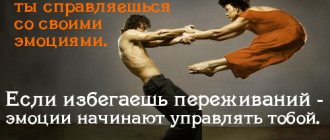Metaphorical association cards ( MAC ) are a powerful psychological tool. They do not belong to fortune-telling or gambling, although the methods of work sometimes resemble esotericism or various meditative practices. The MAC deck can show different images. Each drawing is aimed at awakening the subconscious and causing some associations.
MAK is used in many areas - psychology, training, teaching. But before you start using the method, it is important to know what metaphorical mind maps are and how they can improve your life.
Depth of presentation of the subject by the course
When taking on the description of any object, the author must first of all decide how detailed his model will be.
Someone wants, for example, to learn to drive a car. Some people want to not just drive, but win races. Another plans to drive, win and do his own repairs. The fourth one already knows how to do all this and decided to master tuning. The fifth one dreams of becoming an engineer and learning how to create cars.
Each of these people needs models of an object such as a car that are different in detail.
It is impossible to please everyone. A detailed model will be too complex for someone who wants something quicker and simpler. In turn, a simple one will seem primitive to someone who likes to figure it out properly.
Therefore, before starting to write, any author must make a choice.
All training courses on metaphorical maps in Russia are driving lessons. Here is the gas, here is the brake, here is the technique for turning right, here is the technique for parking. Buy a deck and try it. What's under the hood is none of your business.
I decided to do something opposite, because at one time I myself needed fundamental guidance. I wasn’t even a psychologist then.
Thus, when starting to write this course, I proceed from two assumptions:
- You know almost nothing about metaphorical cards.
- You know almost nothing about psychology.
This is a course for dummies.
Let's start from the first point. From metaphorical cards.
What MAC decks exist and how to choose yours
First of all, cards are divided into several groups according to the purposes of their use:
- universal – suitable for almost any request (the “OH” deck is one of these);
- special – for specific situations (family, children’s, for working through fears, men’s, women’s, for pregnant women);
- portrait (archetypal) - for studying the inner world, one’s “I”, social roles, masks, interactions (for example, the “Image of a Woman” and “Image of a Man” decks, “Subpersonality”);
- resource-based – to search for inspiration and strength, your own resources.
All these MACs can contain images or text, or both. There are also photo decks and cards with drawings. Many of these options are non-therapeutic or specialized. They are suitable for anyone who wants to understand themselves, their life and improve it.
Most often, specialists purchase several decks for different techniques, especially since they can be combined with each other during one session.
For professional activities, it is worth taking at the initial stage one set of MACs of each type and also several more, depending on the number of specific topics that will be worked on.
The main rule when choosing is that the cards should be pleasant, catchy, so that interaction with them is pleasant, and the drawings make you want to look at them. In addition, the presence of resource images is important. They can't all be negative.
What are metaphorical cards?
To put it as simply as possible, metaphorical (projective, associative) cards are sets of cards made of thick paper or cardboard with drawn or photographic images printed on them.
Here, for example, is a deck of metaphorical cards “Tan Du”:
Most often, the cards are made in playing format with the same cover for everyone, although it can be different.
At the moment, about 700 different more or less popular decks are sold, which are produced in Germany, Israel, Holland, Russia and Ukraine.
The cards themselves have no value. If you were given a deck, you wouldn't know how to use them in ten years. Maps are just a tool. Like a hammer or a plane.
They become useful only in the hands of someone who has the appropriate knowledge and skills.
The knowledge and skills required to work with metaphorical maps are psychology and mastery of appropriate working methods. Therefore, metaphorical maps are mainly used by psychologists.
Why do they need these cards with pictures?
In short, psychologists use metaphorical maps as a tool to perform techniques to diagnose and correct human problems.
Explaining what these techniques are and why metaphorical maps are useful here takes more than one hundred pages, but the main principle is simple:
Types of MAC
Metaphorical maps are divided into thematic types. There are highly specialized images designed to understand a specific complex issue, and there are quite universal postcards that can probe a vast problem area in the subconscious.
The following types of MAC are becoming most popular among psychologists:
- Persona – a set of postcards depicting human faces with a variety of emotionally charged expressions and states;
- Tandu - a special deck of cards designed to work out and adjust relationships in a couple;
- Ecco – work with creative potential;
- Cope – healing of mental trauma;
- Saga – the formation and growth of creative thinking, imagination and creative abilities;
- Morena – activates resources and gives simple ways to become happy;
- She is a female, high-resource deck;
- OH (OH) – disclosure and concept of oneself, one’s meaning and role in the Universe;
- 1001 – meaningful fairy tales for growing imagination and filling sleepless nights;
- From the chest of the past - working with childhood fears, traumas, neuroses;
- Windows and doors - working through various dangerous conditions, searching for resources to get out of them.
This is only a small thematic part of the overall impressive volume of card association decks, which is most actively used by correctional specialists or people seeking self-knowledge.
Photo by author: RF._.studio/Pexels
The basic principle of operation of metaphorical cards
Each metaphorical card is a visual stimulus, the consideration of which brings into a person’s consciousness “material” from his psyche.
A simple example. Please look at this map:
Looking at it probably brought to your mind the understanding that this is an image of a chair.
It seems natural to you. And in fact, you say, this is news, looking at the photo of the chair, I see a chair. Holy shit miracle!
In reality, everything is not so simple. If you show the same card to a baby, he will not see a chair on it. For him it will be just hard paper with colored spots, possibly edible. The same thing will happen when presenting a card to a representative of a primitive tribe from somewhere in the Amazon.
Do you understand? You see a chair on the map only because the chair is already in your head. This is how human perception works - we see, hear, smell, feel only what we know.
When Columbus's ship sailed to the islands in the Pacific Ocean, the Indians on the shore did not pay attention to him. They thought it was some strange little boat. They simply had no idea what a European ship was or what size it was. There was nothing similar in their experience except their own boats. In their heads there was no large ship with dangerous people with firearms, so they did not see it in reality , deciding that the same boat as their own had sailed into their bay. And they were very surprised how such a crowd of Spaniards fit on it.
It is precisely with the contents of a person’s memory, with his personal experience, and in general with the neural connections in his brain that metaphorical maps allow us to work.
I like Evgenia Eliseeva’s metaphor, which compares the human psyche to a huge warehouse in which pitch darkness reigns. You stand in the middle of it all and shine a small flashlight in front of you. The cone of light from it is small and contains a maximum of 5-7 objects. This is human consciousness. If you need to find something valuable in this rubble, such as a childhood event that started a problem, you can spend a lot of time just moving a flashlight around. And still nothing can be found.
Metaphorical cards are a way to instantly find and illuminate, pulling into consciousness, what you need in this warehouse. You look at the map - and in the circle of light the necessary memory appears, a long-forgotten feeling, the image of a person who left you long ago, a solution to an old problem.
Let's clarify the basic principle of the operation of metaphorical cards:
Each metaphorical card is a visual stimulus, the presentation of which allows one to evoke into a person’s consciousness the meanings contained in his psyche, and then manipulate them in accordance with the psychologist’s plan.
In the future, we will call images, meanings, emotions extracted from the human psyche with the help of metaphorical maps material.
We'll talk about manipulation later, but now let's see how the process of calling material into consciousness with the help of a card occurs. At the same time, we will master the first technique, which I call “Sincere conversation about me.”
MAK - instructions for a psychologist
MAKs are an effective tool in the hands of a psychologist, teacher or coach and have long been successfully used in transformation games, trainings and educational lectures. With the help of cards, for example, you can easily establish relationships, organize acquaintances, develop creativity, and make choices in difficult decisions.
How do metaphorical cards work? The person pulls out a postcard at his request, looks at the image and describes his intuitive associations. The patient does not talk about himself, so he relaxes and, as it were, moves away from his own problems, releasing his painful blocks and revealing his experiences. Through associative cards, an experienced psychotherapist is able to not only discover the cause of the problem, but also pull it out of the subconscious and work on it until it is completely cured.
Psychologists' clients, especially children, love to interact with metaphorical association cards in a playful way, easily relax and clearly enjoy the process of playing associations. At the same time, a psychologist can easily get to deep-seated internal problems that a person does not suspect in himself.
Photo by author: RF._.studio/Pexels
It is a known fact that our subconscious mind resists and fears being declassified, and such a method of deep associations as MAC helps to bypass this obstacle and decipher the subjective reasons for certain behavior and emotional responses to life factors. Therefore, metaphorical associative cards are a unique method and the best assistant in psychological practice. A survey of current psychologists showed that those who have already tried the MAK tool in correctional consultations cannot imagine their work without these miracle cards!
Technique: Sincere conversation about me
Hello! My name is Zateya. I am 33 years old. I received my psychological education at the Peoples' Friendship University of Russia at the Department of Psychological Counseling. But by basic education I am a chemical technologist of oil and fuel. I'm not married, no children. In my free time I dance hustle and attend the Muay Thai section. I love science fiction, and worked as a television screenwriter for a couple of years.
This is roughly how I would talk about myself if I came to you for a consultation as a client.
After what you have learned about me, do you think I will be able to pay for your services? Am I committed to solving my personal problems or do I simply have no one to complain to? Should you even try to help me or is it better to refer me to a psychiatrist?
Agree, if you were a psychologist, and I was your client at the first consultation, from my presentation above you would not understand anything really important about me.
This is exactly what the vast majority of people’s stories about themselves are like. The material that we consciously give out is often false, incomplete, consists of social cliches (studied, married, worked) and does not carry much value for a psychologist.
But not always. Now I will try to tell about myself using metaphorical cards. The specific technique I use for this is called “Honestly Talking About Me.” I always use it at the first session to get to know a new client, explain to him how the cards work and change his internal state to a more interested and open one.
More about fortune telling techniques
There is an interesting technique - changing the point of perception. A person needs to blindly select two metaphorical cards, where one is responsible for the problem and the second provides a solution. The problem has to be described by examining the image. Then swap the symbols and the “solution” becomes the “problem”.
There is also a drawing method. You need to select a card and place it on a large sheet of paper. You begin to complete the basic image, explaining what exactly you see and what symbols you want to add.
The relationship analysis scheme is that you draw 5 cards at once, where each one answers one of the queries:
- What ruined the romantic relationship?
- Are you responsible for the destruction of the relationship and how much?
- What is the other half responsible for?
- What still makes you happy in a relationship?
- What actions should be taken to restore harmony in a couple?
Description of the technique “Sincere conversation about me”
The purpose of the technique: meeting a new client. Creating an atmosphere of trust and intimacy. Training the client in the basic ways of working with cards.
Procedure: take any deck of metaphorical associative cards and invite the client to randomly draw from it an arbitrary number of cards face down (usually 5 are enough). Then ask the client to turn over the cards one by one and openly talk about what thoughts about his own life come to mind when looking at the image on the back.
An example of performing the technique: I’m going to take a deck of metaphorical “Oh” cards right now and do this technique.
Here's what I got:
I turn over the first card:
Everything is simple here. This is the apartment I rent in Moscow. You have to pay on the 10th.
I turn over the second card:
Unpleasant card. It seems to me that this person is experiencing despair, it seems to him that he has suffered a complete defeat, has not coped with life. He feels that he is doomed, he no longer has the strength to get up and continue to try to change everything. I had such an episode in my life - complete defeat in all areas of life. Somehow it turned out that my parents did not teach me anything at all, did not create any material base. My father burned to death from vodka at the age of 40. Mother was always helpless and delusional. At the age of 30, I worked as a caramel maker at a candy factory. I poured melted caramel onto the line - my hands are still burned. Total property - one pair of worn-out sneakers, old jeans, several T-shirts, apartment rent in Moscow, which took all the salary, debts. And also a mother, sister and brother are supported. Never had a girl.
I turn over the third card:
This is probably an aura, all sorts of bodies that supposedly surround our material body. My mother immediately comes to mind. All her life she has been afraid of the evil eye, empty buckets, whistling indoors, and believes anyone who talks about the “subtle plane” or chakras. Now there is a craze for seminars of another guru who came to our world “from high dimensions.” It costs a pretty penny, but she doesn’t have the money to treat her varicose veins or replace her dental crown with a ceramic one. And it's infuriating.
I turn over the fourth card:
On this map I see myself as ideal. This is a metaphor for the state I want to get to someday. A calm, wise and happy person, in some very complex way serving something that is incomparably larger than himself. For me, these are my people.
I turn over the fifth card.
My recent desire to learn how to play the ukulule immediately comes to mind - it’s a small ukulele with four strings. The problem is that I'm already going to hustle, which then I'll have to quit. Well, to hell with it, but... I quite often give up on a task without finishing it. The ability to mobilize and do what needs to be done, whether you like it or not, is the most important thing for me now. Let writing this course be another exercise in that.
That's all the technology.
Do you think you know more about me now? Is this information significant for a psychologist?
Obviously yes. What if there are 20 such cards? By the end of the conversation, you will know more about me than my aunt.
I use this technique in the very first session when meeting a client. I lay out 5 cards for myself and let him choose. Then we take turns turning over our cards and telling them what we see. I am him, I am him...
Three tasks are solved at the same time: making acquaintances, creating an atmosphere of trust and training a new person to work with cards. I'm not even talking about diagnosing client problems. As you can see, the material being raised is important.
Now watch a video example of the same technique performed by Nika Vernikova:
Again, you must agree that the client voiced very important material that might not have been obtained any other way.
Now do the “Sincere conversation about me” technique yourself.
April 9, 2021
85541 views
Olga Skrebeyko Chief editor of the home publishing house www.skrebeyko.ru.
- skrebeyko.com
- facebook.com/olga.skrebeyko
- vk.ru/skrebeykoolga
- instagram.com/Olgaskrebeyko
I will tell you about methods of working with metaphorical associative maps that can be used to develop creative potential.
My first encounter with these colorful pictures took place several years ago, when my friend and colleague Masha brought a deck with cheerful inhabitants of an Indian tribe (the “Morena” deck) and held a short session with me.
For the first time during a coaching session, I included not intelligence and logic, but some other options. I looked at the tanned, strong and cheerful inhabitants of the tribe, and feelings, associations, and emotions were born in my head.
It was a completely different job. Deeper and more real.
Then I began to study metaphorical cards as a tool for my practice. I read how psychologists use them in their work, researched unique cases of healing with the help of cards (physical and emotional).
At that moment, I considered this instrument too serious for myself.
You can use cards both in individual and team work to develop the subconscious. People react to them very individually. In the same picture, one sees something very dark and scary, the other sees something inspiring and beautiful.
From time to time, cards returned to my life.
I associate the TanDoo deck about relationships with sunny summers. One day Masha and I were sunbathing at the dacha and talking about important things. We took TanDoo to help us, and in this deck there are two types of cards: beautiful, schematically drawn pictures with men and women in various unusual situations and positions, as well as unprecedented road signs.
I remember the cards that I pulled out then, I remember how I felt from these cards.
Since that summer I started playing with metaphorical cards. First, in my closed groups, where I conducted various programs. Then in your live journal.
She suggested topics for research, applying different decks to them. Participants voiced a request, named numbers and received a map for their situation. Then they wrote down the associations that first came to mind.
So this work-game unfolded in full force. Based on all the games I played on my LiveJournal (and the games I played in guest format, visiting other bloggers), I could write an entire dissertation.
People react very individually to cards. Looking at the same picture, some people see something very dark and scary, while others see something inspiring and beautiful. Almost everyone receives very non-standard, beautiful and elegant answers to their requests or finds support in thoughts and intentions.
Why does this happen, how do cards work? Let's look at the types and types of cards, ways to work with them (including for self-exploration) and answer these and other questions.
Where did the cards come from?
There is a whole family of metaphorical associative cards that are produced under the name “Oh-cards”.
It was interesting to know that initially decks of cards were formed based on the paintings of famous artists: Paul Gauguin (“Tahiti”), Hieronymus Bosch (“Bosch”). And these cards were printed for art lovers.
Art takes completely different, more accessible forms, and in the compact form of card decks it comes as close as possible to ordinary people. If a person plays a passive role when contemplating monumental paintings, then contemplating the same work in card format can awaken his own creative impulse... A work of art appears not only at the moment of its creation by the author, but is also born anew each time when it is perceived by each specific viewer. Which, thus, also joins the process of creation. Waltraud Kirschke "Strawberries outside the window"
The very first “Oh” deck was conceived precisely in the aspect of “Art in card format”. Then it turned out that the cards are more suitable as an ideal tool for therapy, self-exploration and the development of creativity.
Why do mind maps work so well?
Our mind has a “checklist” and it gives us this list in response to any question.
The first thoughts that come to mind are socially approved or socially significant decisions. Or standards imposed by someone or firmly ingrained in the head.
When questions are asked directly, head-on, the mind first runs through this list, but there is nothing new in it! There are no new, bright solutions, insights, discoveries! The conscious mind is conservative, it is difficult for it to seek new things and leave the comfort zone.
Everything new, tasty, interesting is in the unconscious - where intuition lives. To turn on the unconscious mind and look for non-trivial solutions in it, you need skill and skill. We need games, metaphors and associations, and maps - a great way to “disconnect” from the conscious (after all, you won’t find direct answers on the map!) and connect to the unconscious, creative.
Working with cards involves “the power of spontaneous dialogue between the two hemispheres of the brain: thanks to the joint work of these opposite principles, intuition awakens and the optimal solution is born.”
In what situations are association cards needed?
— In therapeutic work with children and youth. — In adult psychotherapy. — In advanced training and mentoring. — In group trainings on creativity, communication skills and development of leadership skills. - To work with dreams. — As a means for training intuition and inner voice (for independent work or playing in a company).
- “Maps for self-discovery can reveal the ability to create your own stories in narrative play with other storytellers.”
You can play the most interesting games with decks of cards, inventing stories and stories, and then seeing yourself in these stories. Now there are many games built on working with associations. For example, Imaginarium or Dixit.
- “Card games teach us to reflect on ourselves, they teach us liberation and release our creativity.”
In the modern world, more than ever, we need the ability to quickly respond to any changes in the situation spontaneously, creatively and intuitively. In games with associative cards, such a skill is developed. They also train flexibility and imagination, which are needed in everyday life when unforeseen situations arise.
- “Games with associative cards teach us to look into the future openly and without fear.”
If in a game we can make a decision in a situation that is unexpected for us and react accordingly, then in life we can boldly go towards the new and unexpected, cope with it spontaneously, creatively and intuitively.
You can also use metaphorical cards... Take an interview! And it will turn out to be interesting material, as it happened with Valentina Gabysheva and me.
Types and types of cards
For myself, I divided the cards into the following groups:
— cards with drawings (abstract or concrete); - cards with drawings and words (in this case, the drawing plays a leading role); — cards with words (drawing as a background or addition).
In the Oh-cards family, my favorite decks are:
- The already mentioned “Morena” .
This deck contains scenes from the life of the inhabitants of the rainforest, and there are cards with different traces.
“Traces are imprints of events. To step in someone's footsteps means to do the same as the one who left the footprints, to live the same way as he did. We, in essence, do this by looking at the pictures in the deck: we step in the footsteps of people living the kind of life that we unconsciously yearn for, that we would love to live ourselves.”
Here the memory of a wonderful time is vivid, when people had not yet separated from the rest of the animal world and felt their unity with all living things. The peculiarity of the Xingu people is that they continue to live in such unity, while for us, modern people, this is only a beautiful illusion. The harmony of life, in which man is part of the nature around him, is visible in every painting by Valde Mar. The player is given the opportunity to find this harmony within himself. If this works out, it means that we have still managed to preserve our childhood, which dares to dream. Waltraud Kirschke "Strawberries outside the window"
- Ecco Cards
This is a completely different format of work, since the participants themselves will be involved in the creative process!
It is proposed to put the map on a blank sheet of paper and color it, add something of your own. As a result, a “picture grows” on the entire sheet of paper.
You can then remove the card and fill the white space underneath it.
As with other associative cards, we are not talking about achieving some result or winning at any cost... Players need to give free rein to their feelings and unleash their imagination when talking about what they saw in the cards and what they drew. This game option (as in almost all games with associative cards) can be either just a fun game together or a stepping stone to a serious conversation.
- Self-development cards "Claro"
Professionally printed, with a bright varnished back and a blank front, these cards can be customized with pictures, quotes, poetry, whatever. Then cover them with a special fixative and use them to develop your subconscious and intuition.
Wide scope is given to the spirit of invention, fantasy and creativity - both in creating cards and in discovering a wide variety of game options.
Cards for developing creativity
- "Zebra Cards"
“Zebra Cards” are wonderful cards, I enjoy working with them in individual sessions, in team sessions, and in trainings.
I use this deck in my personal work, it helps very well when working with entrepreneurs and teams.
Labels play a big role here. Each card contains a description of an animal and its strategy of action, as well as a schematic representation of this strategy.
At one strategic session, the customer and organizer of this very session chose the “Possum” card. Action Strategy: Knows when to play dead. Every time a respected entrepreneur would give a fiery speech about efficiency and productivity, I would jokingly ask him to play possum. And he listened to his command.
Seriously, you can come up with new products using these cards. For example, how to connect innovation in the automotive industry and the qualities of a chameleon? Create a car that changes its color depending on the owner’s mood. Or look for answers to your queries, or even think about why this or that card fell out now.
- "Shoes and hats"
In my opinion, a purely feminine deck. I played with her in Israel and didn’t have time to learn all the ways of working.
However, the cards are interesting, you can play with them “openly” - choose shoes and hats according to the situation and discuss them. Or you can “closed”. I, in my opinion, pulled out a cap and elegant boots, and then decided how this reflected my situation.
It turned out to be fun, as is usually the case with cards.
- "Coach Trees"
A most interesting deck by Lyubov Moshinskaya. All maps contain images of different trees. You choose the cards yourself, then tell how this tree answers the presenter’s question.
For example, answering the question: “Which tree reflects your life values,” I choose a large, spreading tree. It stands on the bank of a river and is reflected in it. The presenter asks me: “How can the crown of this tree describe your life values?”
I look at the tree in a new way, and the words that come to mind can be attributed to my life values.
Not idle questions - and deep reflections that lead to the most interesting conclusions.
- I really love the “Master of Fairy Tales” deck
Here, a book is attached to the deck, where each card has a meaning and interpretation, as well as an archetype and a number of questions that you can ask yourself.
Each card is part of a fairy tale that can be told to a child or an adult. The work is usually based on four cards, the entire algorithm is clearly spelled out. Everywhere there is a place for creativity, and this deck suggested to us the names for the author’s programs in the “Personal Brand” happening.
I like to pull out one card and look at it in more detail, then read about it - and get a hint for further actions. You can come up with your own fairy tale together with your children, based on several pulled out cards.
Decks based on the books by Esther and Jerry Hicks
"Law of Attraction"
"Money and the Law of Attraction"
"Dreams Come True. The Law of Attraction in Action"
These are just more verbal decks. On the cards are quotes from the Hicks’ books, heartfelt, beautiful, heart-tugging words. Very precise illustrations have been chosen to accompany the words, and they are also worth reflecting on.
I love the Hicks, and I love these cards too. One of the decks, about dreams, also has a large book with clarifications and explanations. These decks are good for raising your spirits and increasing your inspiration. And for those who perceive words better than pictures.
Creating your own decks
Now I build decks myself. I have several treasured folders that contain pictures of different illustrators and artists, which are literally on their own.
We play with these cards online. And here I have:
— Pascal Campion with joyful, bright and rich pictures from the life of happy people (pictures about family, children, joyful summer days).
— Vladimir Kush (who is called the Russian Salvador Dali). Although Kusch's unrealistic situations and unusual combinations are very reminiscent of surrealism, he himself defines his style as “metaphorical realism.” He uses metaphors to convey inexplicable ideas and concepts, such as creativity or love.
— Inge Look and her beautiful pictures of lively old ladies. You can ask them anything. “How to live tomorrow?”, “What will you be like in forty years?”, “What invention will you please this world with?” I once played these cards with a man who was going on a trip by sea. And he got a map with old women sitting in a boat, with oars and a charming umbrella. Coincidence?
Anyone who deals with associative cards will sooner or later come to an amazing conclusion: many cards, drawn blindly, amazingly hit the mark and reflect the player’s life situation. And so accurately that you think: “This cannot be an accident!” This has led some circles to attribute mythical powers to metaphorical cards. Waltraud Kirschke "Strawberries outside the window"
However, there is no magical power in the cards; you should not impose such responsibility on them and ask for advice.
Quote on Twitter
Wisdom lies within ourselves, we are the best experts in our lives.
Words and pictures only help us awaken our intuition, see new turns, and look from a different position. And the pulled out card becomes a visible embodiment of hidden knowledge about oneself.
Believe it or not, it works!
How can you play with cards?
In the game with associative cards, there is only one rule and it is this: what the player sees in his cards at the first glance at them remains so, no new interpretations or interpretations are allowed.
It is very important to take a look at the map and immediately give an answer in order to overtake reason and give the floor to intuition and gaming abilities. Turn off the internal censor and release everything that comes.
We'll take off - we'll figure it out later!
You can simply draw yourself a “Card for the Day” from any deck and ask it one question. For example: “What do I need to let go of in order to move forward?” or “What resource do I need most right now?”
Or use one of the many options:
1. Write your own fairy tales or stories and develop creativity . It looks like this: each player takes turns drawing a card, and, looking at it, spontaneously pronounces a phrase.
The next one continues, and so the story goes. Each participant can choose three cards. The most difficult thing, of course, will be for the last one - he will have to complete the fairy tale.
In such games, adults have fun like children, because the deck challenges players, tests their imagination and builds unexpected and vivid plots.
In addition to being fun, such fairy tales or stories (if written down and then read) can tell us a lot about ourselves.
2. Draw out one card and speak briefly on the topic “I had a dream,” based on the picture that fell out.
Tell where you live in this story, what you think about in this dream, how you feel. Then you can imagine yourself as some other participant in this card (person, animal or object) and imagine yourself from the point of view of this participant.
It’s as if this participant in the picture is telling something about who is seeing this dream.
The key question is: “Which side of me is represented by this card?”
This is what happened to one participant in an online game in my LiveJournal:
3. Identify some request (goal, task). Choose a card and name ten of its properties that immediately caught your eye (color, structure, concept, characteristics, characters).
Write them down in a list, and then write down each item - what kind of solution could it be?
Summarize and choose the most inspiring options.
I am a professional (author Lyubov Moshinskaya)
Select three cards (open):
I’m at the beginning of my career in this profession.
I'm like a professional today.
Ideal: me, how I would like to be in my profession.
Tell us why these cards, what is important to you at each stage.
From the cards lying face down, choose the fourth card: what will help you achieve the ideal?
Six cards for creative life planning
Initial situation. Who I am now, at the moment when I step on the Path to my goal.
Aspect of a goal or dream. What do I need to consider? What to concentrate on?
Obstacles on the way to the goal.
Resources for overcoming obstacles.
Am I ready to start?
A real step.
17 more ways to work with metaphorical maps
1. Introduction (icebreaker exercises in trainings)
Everyone draws a card and talks about their mood through the card: in what ways the mood is similar to what is shown on the card, in what ways it is not.
2. Group idea generation
One person voices the task. The others take turns drawing a card and coming up with ideas on how to solve the problem by interpreting the card they have in their hands.
After everyone has voiced their idea, maybe even more than one, the next participant poses a problem.
3. Projection technology
You can do it alone or with someone.
Choose a card from the deck that depicts the image that you think you resemble most. To choose means to look through the cards and find the one that is most similar to you.
Next, you need to describe this character or this image. Who he is, what he does, what they do to him, what he thinks about, what he wants, what he does well and not so well, what he needs help with, etc.
Everything you say on behalf of the character is your projection, it’s all in you. If you want deeper insights, replace “he” or “she” with “I.” And try to say the same thing, but on your own behalf.
Perhaps some thoughts will be close to you, and some you will want to discard. Think about every phrase you say.
4. Birthday gifts
Don't know what to give? Open cards one at a time and catch the flow of ideas. Use a deck of cards as a chest of gifts.
The characters, colors, places depicted in the pictures become triggers through which ideas quickly arise.
5. Questions about relationships
Select a relationship that you would like to understand (with your partner, spouse, friend, child, parent, co-worker, boss, etc.).
Draw five cards blindly:
1. What doesn't work in a relationship? 2. What do I bring to the relationship? 3. What does the other party bring to the relationship? 4. What works in a relationship? 5. What needs to happen to improve relationships?
6. How I see you - feedback
Similar to method No. 3, only you need to choose the card that most, in your opinion, reminds you of your partner (boyfriend/girlfriend, husband, brother, colleague, etc.).
Then tell us why you chose this particular card. What part of your partner is reflected in the picture? How is the character similar to your partner? What external and internal characteristics are similar to them, etc.
The method can be used as entertainment, as a way to get acquainted, as a way to give and receive feedback if this is difficult to do in direct communication.
7. Movie
The map is a frozen frame of a film.
What is depicted now (how does it relate to your life)?
What was “before”?
What will happen “after”?
You can speak one by one in the first person for everyone who is depicted. At the very end, a story on behalf of the director (the director is the one who works with the map): what is the actual idea?
This will allow you to choose a plot suitable for a person from all that were previously voiced.
8. Analysis / self-analysis At the end of the training, operational session, conversation, you pull out a card and answer the question: “What was the most important thing about this?”
You draw the next card: “What will be the first steps after this?” Brief and useful!
9. Photo frame
Everyone draws a card and stands in the pose depicted on it. A group or individual photo is taken. Fun and original!
10. Obstacles and resources
One card is what helps in solving the problem, the second is what is hindering, the third is a new direction in solving the problem.
11. Development of positive thinking
The game consists of two stages.
First, picture cards from any deck are quickly divided into two piles: “positive” and “negative.” This is done without much thought.
All cards from the "negative pile" are then taken and, one by one, interpreted as "positive". After describing the negative characteristics of the cards, you can end the story with a positive conclusion.
12. Getting to know the familiar
A group member (client, player) is asked to focus on a problem or unpleasant situation in his life.
The client then draws eight cards from the deck and arranges them as follows:
A look at what is happening from the orbit of a space satellite.
A bird's eye view of what's happening.
A look at what is happening from the top of a nearby tree.
A look at what is happening from the palm of your hand.
A look at what is happening from a deep dungeon.
A look at what is happening through the eyes of a curious wizard.
A look at what's happening through the eyes of a neighbor's cat.
A look at what is happening through the eyes of a psychiatrist.
Biography.
13. Dialogue with yourself
Mix two different decks and spontaneously, guided by feelings, choose five cards with which you can imagine yourself as a child, teenager, girl (young man), adult, elderly person.
Have them talk to each other.
14. Changing the point of perception (by Moritz Egetmeyer)
Players receive or draw two cards blindly and look at them.
Each participant opens and chooses one card that symbolizes the problem and one that represents the solution to that problem.
As soon as everyone is ready, a brief explanation and story to the group about the problem and its solution follows.
Next, the presenter suggests swapping the cards: the problem becomes a solution card, and the solution card becomes a problem card. Story again.
If the work is individual, you can use the third card (from any other deck) as a transition between one state and another.
15. My history (including for diagnosing changes)
At the beginning of work (training, consulting), draw five cards blindly and arrange them in a convenient order. Briefly tell what these cards are about, how they relate to life history.
At the end of the work (consulting, course, training), take these five cards and arrange them in accordance with your current state and view of the situation. Tell the story in a new way.
When working through a difficult, traumatic event, you can, after talking about it, immediately (at least three times) do this exercise. The negative charge of the situation is reduced, and the fixation on it is removed.
16. Yesterday, today, tomorrow
Each player draws three cards blindly and turns them over when it is their turn to speak - so that associations are spontaneous.
Open the cards and decide which one corresponds to “yesterday”, which one corresponds to “today”, which one corresponds to “tomorrow”.
Describe the story. Individual moments of the description must be connected and indicate a direction from the past to the future.
17. Drawing
Blindly draw out a card, place it on the sheet so that it is comfortable, and complete the picture as it seems correct, so that the card becomes part of it.
Or you can draw the card openly, according to the state, and draw a picture-state to allow emotions to be expressed, to be legalized.
Using cards in everyday life
Here's how writer Stuart Weir works with maps:
Writing
Saga and Myth cards often help me jumpstart my creativity.
Taking a moment away from work, I pull out a card, and the picture depicted on it gives a new, unexpected direction to my thoughts. Even a card that I have drawn more than once before takes on new meaning for me.
The state in which I find myself determines the meanings that I find in the cards and is reflected in the nuances of the emerging story.
Development of the Spirit
The world of images feeds my spirit and allows me to step into new territory and cross uninhabited terrain. Even if the story that arose thanks to the map has no specific relation to my current work, still in the process of working with the maps my vision of the problem changes, and I gradually get out of the quagmire of creative crisis.
Just as I use cards for creativity, I use them to solve some everyday problems. Moreover, the story that arose thanks to the cards is usually not related to the real problem.
As my creativity awakens, my vision expands and new solutions come into view.
The solutions that emerge are by-products of the invented story. Revealing the hidden reserves of creativity means opening up new possibilities of choice, along with this - taking into account new decisions.
Metaphorical cards are an amazing tool. Powerful, resourceful, inspiring and opening up new facets. Try the cards at work! And you will see that solutions can be given easily, and problems can be solved effortlessly.
Unleash your intuition and subconscious wisdom! If you have any questions, write to us and we’ll discuss them!
Shall we play cards? Visit my website and choose the “card of the day”.
Archive of issues #Games #Creativity #Self-improvement #Creativity
Exercise to practice the “Sincere conversation about me” technique
I'm going to randomly pull out 5 cards for you right now. Every time before you look at a card, ask yourself: “What does this card indicate in my life?”
To see the front side of the card, simply click on it.
First card:
Say the first thing that comes to mind when you look at the map, regardless of how you feel about it. If this thought appeared first, then it is really important and has long wanted to be the focus of your attention.
Second card:
“What thoughts about your own life come to mind when you look at this card?”
Third card:
“What thoughts about your own life come to mind when you look at this card?”
Fourth card:
“What thoughts about your own life come to mind when you look at this card?”
Fifth card:
“What thoughts about your own life come to mind when you look at this card?”
Well, how did it work out?
Obviously yes. That's what's good about cards - you can start practicing in 10 minutes after becoming familiar with the instrument. Therefore, metaphorical cards are a kind of “golden path” into psychology. You don't need to study theory for years/months/weeks to start practicing.
Because theory can be instantly tested in practice, learning becomes much more interesting.
I remember I tried this technique on my first day on a date with a girl I had met the day before. And we were both delighted, sitting at this game in the cafe until closing. And yes, there was no second date, because despite a wonderful evening full of mutual self-disclosure, we got to know each other so deeply that we both realized that we were incompatible as a couple.
Now all you have to do is practice this technique on living people. You can do this with any of your friends or loved ones. Usually it is perceived as an interesting game, because, frankly, there are not so many sincere conversations in our lives, and we all really like to talk about ourselves.
Two or more people can play. The main thing is that you have a deck.
When it comes to the average client, during a “sincere conversation” he intuitively understands how to use the map to extract “material” for work and then the consultation continues without a hitch in accordance with the structure of the session.
But this doesn't always happen. Sometimes the client does not understand how looking at the card led to a memory of being forgotten in a department store as a child. Intuitive understanding does not come.
The client looks at the card and doesn’t know what to say.
Well, this also happens.
In this case, I am faced with the task of quickly teaching him ways to extract “material” from his psyche.
There are 5 such methods in total. We will deal with them in the next lesson.
Choosing a working method
If you want to try it, you usually come to a psychologist with a specific problem. Then the specialist reveals 3 methods of elaboration:
- open strategy - all cards are laid out face up. A professional asks the simplest and most harmless questions, and you intuitively choose cards. This creates an atmosphere of trust and relaxation;
- closed strategy - cards are laid out face down. A person needs to choose cards, but he does not know what may be there;
- combined strategy - the first card remains open, and the rest lie face down;
| Fortune telling with Tarot cards to the question |
| Fortune telling “Will my wish come true?” Tarot cards are always ready to reveal whether your wish will come true as soon as you click on the deck. You don’t have to study or remember anything, because the system automatically carries out an accurate and truthful calculation. and look into the future. |
| Fortune telling “What was, what is, what will be?” If you want to understand your own life and understand in which direction it is better to develop, then a magical Tarot deck will serve as an ideal tool. An accurate and useful breakdown of what was, what is and what will be will comprehensively examine the problem and provide a detailed description of your situation. |
Homework
Perform the “Sincere conversation about me” technique with 5 different people.
If you don’t have a deck, you can use the free service on our website “Metaphorical Cards Online”: https://online.metaforicheskie-karti.ru/ It allows you to use the Oh-Pictures deck in online format for layouts directly on your computer screen. It looks like this:
It's not difficult to figure it out. Cards are dragged onto the table with the mouse pointer. They can be flipped over, chosen blindly, face up, enlarged, shuffled, placed anywhere on the screen - everything is as if the deck is in your hands.
Sit your loved ones and friends next to you at the screen and practice the technique.
The only negative is that the service does not yet work very well on mobile devices. But we are working on it.











